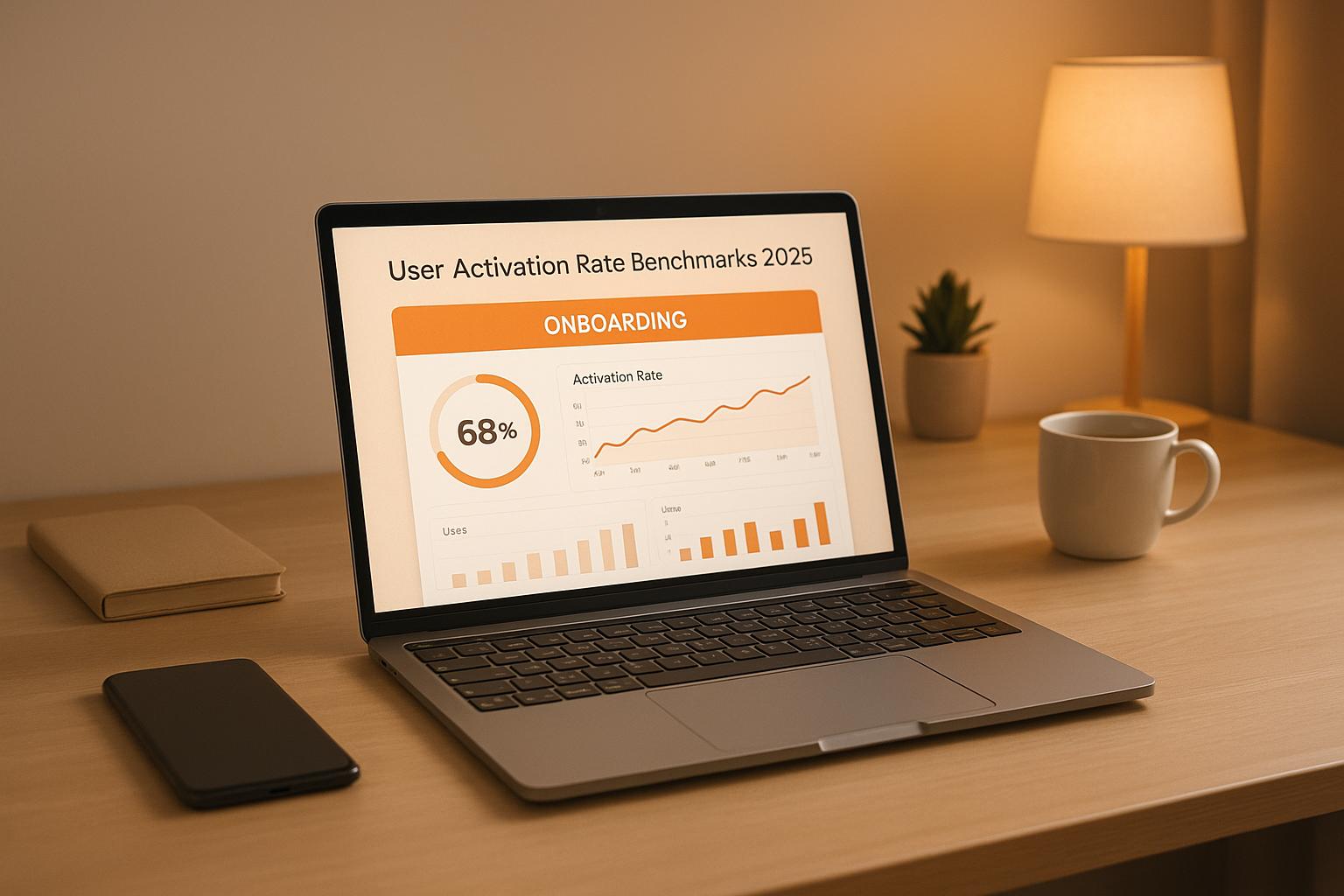Choosing between annual and monthly billing impacts your SaaS business's revenue, customer retention, and cash flow. Here's a quick breakdown:
-
Annual Billing:
- Provides upfront cash flow and stable revenue.
- Reduces churn and increases customer lifetime value (LTV).
- Better for long-term planning but requires strong customer commitment.
-
Monthly Billing:
- Offers flexibility to customers.
- Easier for customer acquisition but leads to higher churn rates.
- Generates less upfront revenue and requires stricter cash flow management.
Quick Comparison
| Metric | Annual Billing | Monthly Billing |
|---|---|---|
| Churn Rate | 5–10% annually | 30–50% annually |
| Revenue Predictability | 80–90% | 60–70% |
| Cash Flow | $120,000 upfront per 100 customers | $10,000 monthly per 100 customers |
| Payment Processing Fees | $0.30 + 2.9% (once) | $3.60 + 34.8% annually |
| CLV:CAC Ratio | 3:1 | 2:1 |
Annual billing is ideal for predictable revenue and long-term customer retention, while monthly billing works well for flexibility and customer acquisition. Many successful SaaS companies use both models to balance growth and customer needs.
Annual vs Monthly Billing: The 20% Rule That Reduced Churn ...
1. Annual Billing Impact
Annual billing plays a key role in shaping both revenue stability and customer retention. By collecting larger upfront payments, it provides a steady cash flow that supports accurate ARR forecasting and better resource planning. This helps businesses allocate funds for growth, hiring, product development, and marketing efforts.
With fewer churn evaluation points compared to monthly plans, annual billing also helps retain customers for longer periods. To encourage this commitment, companies often provide discounts for those who opt in for a full year.
Here’s a quick breakdown of the operational benefits annual billing offers:
| Metric | Impact | Business Benefit |
|---|---|---|
| Strategic Planning | Improved budget visibility | Confident resource allocation |
| Investment Capacity | Increased working capital | Faster growth opportunities |
| Customer Success | Longer engagement periods | Better relationship building |
Tying annual billing promotions to high-traffic events like Black Friday or Cyber Monday can further drive long-term subscriptions.
2. Monthly Billing Impact
Monthly billing offers flexibility but comes with its own set of challenges, especially when compared to annual billing. While annual plans lock in long-term revenue, monthly billing results in more variable revenue patterns. For instance, monthly billing creates fluctuations of about ±5% each month, compared to ±15% each quarter for annual models. This allows companies to respond to market changes more quickly but requires stricter cash flow management.
At the same ARR levels, monthly billing generates 14-17% less upfront cash. This is a key reason why 68% of SaaS companies face cash flow challenges. Additionally, monthly subscribers are more likely to churn, with churn rates 8-12% higher than those of annual users. As Jason Lemkin pointed out:
"Use monthly plans as acquisition engines, but build annual conversion paths into onboarding. Our data shows 22% of monthly users convert to annual if shown value within 90 days."
– Jason Lemkin, SaaStr 2024 Keynote
To address these issues, SaaS companies often implement targeted workflows to recover revenue and manage operational hurdles:
| Metric | Impact | Solution Strategy |
|---|---|---|
| Payment Processing | 40% higher fees | Use automated retry systems |
| Failed Payments | 10-15% MRR at risk | Apply multi-attempt dunning workflows |
| Customer Acquisition | 15-20% lower CAC | Highlight flexible payment options |
| Revenue Recovery | High recovery potential | Use automated payment retry sequences |
In the U.S., monthly billing resonates strongly, with 68% of SaaS buyers favoring these plans for budget flexibility. Canva, for example, leverages this preference with its $14.99/month professional plan, which appeals to users by offering no long-term commitment.
However, monthly subscribers typically have 18-22% lower lifetime value (LTV). Companies like HubSpot have shown that strategic upselling within the first 90 days can increase LTV by up to 33%. Managing payment failures is also critical for maintaining monthly recurring revenue (MRR). Zapier's optimized dunning workflows highlight this, recovering around $2.1 million annually.
sbb-itb-9cd970b
Direct Comparison
A side-by-side look highlights key differences between annual and monthly billing models. According to data from Recurly (2024), annual billing offers better revenue stability and customer retention. Interestingly, 95% of companies with $8M–$15M ARR provide both billing options [3].
Here’s how the metrics stack up:
| Metric | Annual Billing | Monthly Billing | Impact |
|---|---|---|---|
| Churn Rate | 5–10% annually | 30–50% annually | Annual lowers churn by 20–30% |
| Revenue Predictability | 80–90% | 60–70% | Annual improves forecasting by 25% |
| Cash Flow | $120,000 upfront per 100 customers | $10,000 monthly per 100 customers | Annual provides stronger upfront cash flow |
| Payment Processing | $0.30 + 2.9% (once) | $3.60 + 34.8% (annually) | Annual reduces fees by 83% |
| CLV:CAC Ratio | 3:1 | 2:1 | Annual supports higher acquisition spending |
Patrick Campbell from ProfitWell highlights that hybrid billing models can boost net retention by 15% [1].
Key Insights by Segment
Revenue Predictability
Annual billing locks in 80–90% of revenue upfront, compared to the 30% variability often seen with monthly plans [1].
Customer Lifetime Value (CLV)
Consider a $50 monthly plan with a 5% churn rate - it generates a CLV of $1,000. Its $600 annual equivalent, however, achieves a CLV of $2,400, representing a 140% increase.
Operational Efficiency
Annual billing minimizes payment processing efforts by reducing transactions from 12 to just 1, cutting fees by 83%. However, it requires robust renewal management. For example, Salesforce uses a 60-day renewal reminder to stay ahead [4].
Customer Preferences
Enterprise clients lean heavily toward annual contracts, with 82% opting for them. On the other hand, 70% of SMBs prefer the flexibility of monthly billing [2]. Companies like Zoom manage this balance effectively by offering monthly plans to SMBs while securing annual commitments from enterprise customers [2].
Conclusion
The data highlights how annual billing secures upfront revenue and long-term customer commitment, while monthly billing appeals to those valuing flexibility. Many successful SaaS companies use a mix of both, aligning their billing strategies with specific market needs and growth goals.
Metrics show that enterprise clients often prefer annual plans for predictability, whereas SMBs lean toward monthly options to better manage cash flow. This targeted approach helps companies boost revenue while catering to diverse customer needs.
For businesses looking to refine their billing strategies, the Top SaaS & AI Tools Directory offers helpful resources to enhance implementation and results.
FAQs
What are the key factors SaaS companies should consider when balancing annual and monthly billing models to boost revenue and customer retention?
To effectively balance annual and monthly billing models, SaaS companies should evaluate how each impacts churn rates, customer lifetime value (CLV), and revenue predictability.
Annual billing often encourages long-term commitment, improving revenue stability and reducing churn. It also increases CLV by securing upfront payments. However, monthly billing provides flexibility, attracting customers who may hesitate to commit to a full year. This model can help grow your user base and improve cash flow from new or smaller customers.
A hybrid approach - offering both options - can cater to different customer needs. For instance, incentivizing annual plans with discounts while keeping monthly plans available for flexibility ensures you maximize revenue potential and customer satisfaction.
How can I encourage monthly subscribers to switch to annual plans and lower churn rates?
To encourage monthly subscribers to switch to annual plans and reduce churn rates, focus on incentives, communication, and value demonstration. Offer discounts or additional perks for annual subscriptions, such as exclusive features or extended support. Clearly communicate the cost savings of an annual plan compared to monthly payments. Highlight long-term benefits, like stability and access to premium features, to showcase the value of committing to a longer-term plan.
Additionally, ensure a smooth and transparent upgrade process. Personalize outreach to monthly subscribers, addressing their specific needs or concerns. Regularly engage with your customers to build trust and loyalty, which can make them more likely to commit to an annual plan and stay with your service longer.
What are the differences in payment processing fees between annual and monthly billing, and how do they affect a SaaS company's profitability?
Payment processing fees can vary between annual and monthly billing models, and these differences can significantly influence a SaaS company's profitability. With monthly billing, fees are incurred more frequently since payments are processed every month, which can lead to higher cumulative costs over time. In contrast, annual billing consolidates payments into a single transaction per year, often resulting in lower overall processing fees.
Lower fees with annual billing can improve profit margins and provide more predictable revenue streams. However, monthly billing may attract more customers due to its lower upfront cost, even if it leads to higher churn rates. SaaS companies should evaluate their customer base and financial goals to determine which billing model aligns best with their profitability strategy.



